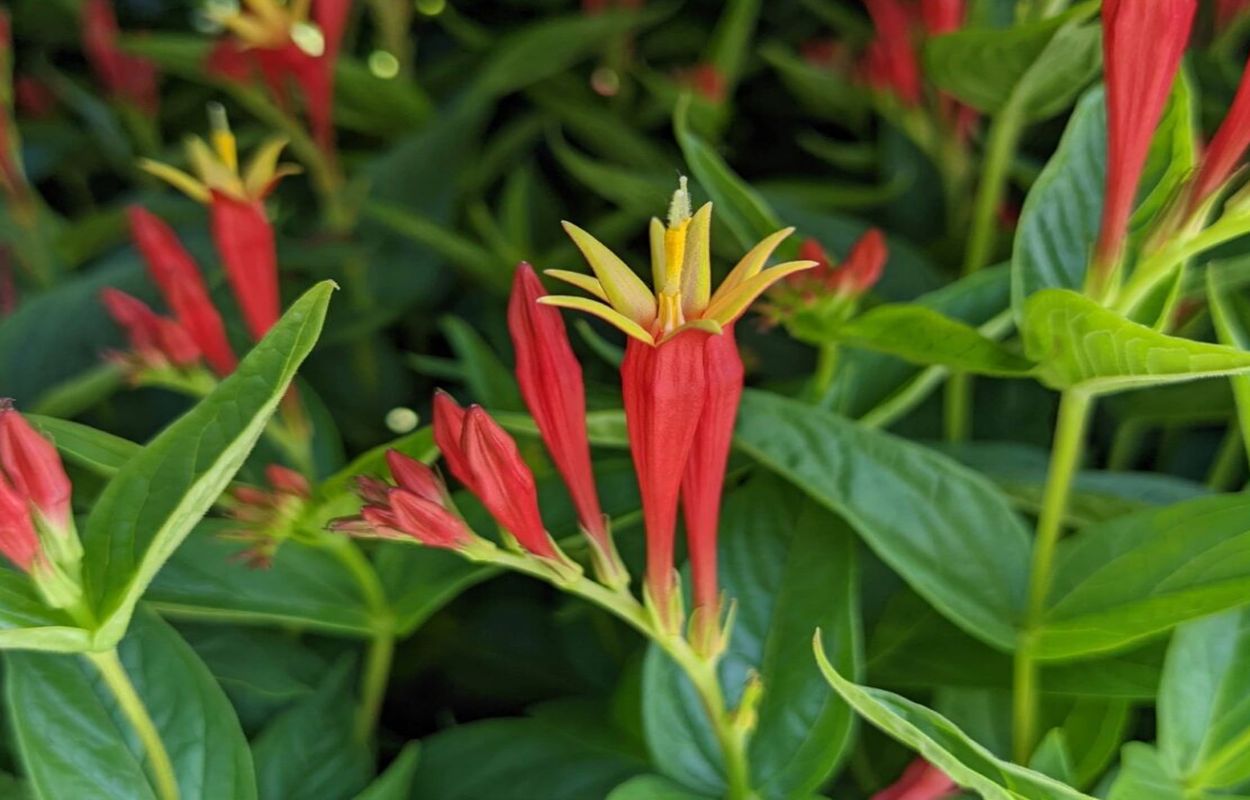
Spigelia is a fascinating plant with a rich history and unique characteristics. Did you know that this plant, often called Indian Pink, has been used in traditional medicine for centuries? Spigelia is not just a pretty face; it plays a crucial role in various ecosystems. From its vibrant red flowers to its medicinal properties, there's much to learn about this intriguing plant. Whether you're a gardening enthusiast or a nature lover, understanding Spigelia can deepen your appreciation for the natural world. Let's dive into 27 captivating facts about Spigelia that will leave you amazed and informed.
What is Spigelia?
Spigelia, also known as Pinkroot, is a fascinating genus of flowering plants. These plants are not only beautiful but also have a rich history and unique characteristics. Let's dive into some intriguing facts about Spigelia.
-
Named After a Botanist: Spigelia is named in honor of Adriaan van den Spiegel, a Flemish anatomist and botanist from the 17th century.
-
Native to the Americas: These plants are primarily found in North and South America, thriving in diverse climates from tropical to temperate regions.
-
Medicinal Uses: Historically, Spigelia has been used in traditional medicine, particularly for treating parasitic worms and other ailments.
-
Beautiful Blooms: The flowers of Spigelia are often bright red or pink, making them a striking addition to gardens.
-
Attracts Pollinators: These vibrant flowers are known to attract hummingbirds and butterflies, aiding in pollination.
Unique Characteristics of Spigelia
Spigelia plants possess several unique traits that set them apart from other flowering plants. Here are some of their distinctive features.
-
Tubular Flowers: The flowers are tubular in shape, which is ideal for pollination by hummingbirds.
-
Opposite Leaves: The leaves of Spigelia grow in pairs on opposite sides of the stem, a characteristic feature of this genus.
-
Toxicity: While beautiful, parts of the Spigelia plant can be toxic if ingested, particularly the roots.
-
Perennial Plants: Most species of Spigelia are perennials, meaning they live for more than two years, blooming season after season.
-
Herbaceous Nature: These plants are herbaceous, meaning they have non-woody stems that die back at the end of the growing season.
Spigelia in Traditional Medicine
Spigelia has a long history of use in traditional medicine, particularly among Native American tribes. Here are some fascinating facts about its medicinal properties.
-
Anthelmintic Properties: Spigelia has been used as an anthelmintic, a substance that helps expel parasitic worms from the body.
-
Pain Relief: Some traditional remedies use Spigelia for pain relief, particularly for headaches and neuralgia.
-
Cardiac Health: Certain species have been studied for their potential benefits in supporting heart health.
-
Homeopathic Uses: In homeopathy, Spigelia is used to treat a variety of conditions, including migraines and eye pain.
-
Caution in Use: Due to its toxicity, Spigelia should be used with caution and under the guidance of a knowledgeable practitioner.
Cultivating Spigelia
Growing Spigelia in your garden can be rewarding. Here are some tips and facts about cultivating these beautiful plants.
-
Soil Preferences: Spigelia prefers well-drained soil with a slightly acidic to neutral pH.
-
Sunlight Requirements: These plants thrive in partial to full sunlight, making them versatile for different garden settings.
-
Watering Needs: Regular watering is essential, but the soil should not be waterlogged to prevent root rot.
-
Propagation: Spigelia can be propagated through seeds or division of the root clumps.
-
Pest Resistance: These plants are relatively resistant to pests, making them low-maintenance for gardeners.
Conservation and Environmental Impact
Spigelia plays a role in the ecosystem and has conservation significance. Here are some important points about its environmental impact.
-
Habitat Preservation: Protecting the natural habitats of Spigelia is crucial for maintaining biodiversity.
-
Pollinator Support: By attracting pollinators like hummingbirds and butterflies, Spigelia supports the health of local ecosystems.
-
Endangered Species: Some species of Spigelia are considered endangered and require conservation efforts to prevent extinction.
-
Ecological Balance: These plants contribute to the ecological balance by providing food and habitat for various organisms.
-
Sustainable Gardening: Incorporating Spigelia into sustainable gardening practices can enhance garden biodiversity and health.
Fun Facts About Spigelia
To wrap up, here are some fun and lesser-known facts about Spigelia that might surprise you.
-
Cultural Significance: In some cultures, Spigelia is considered a symbol of healing and protection.
-
Scientific Research: Ongoing research continues to uncover new potential uses and benefits of Spigelia in medicine and horticulture.
The Final Word on Spigelia
Spigelia, a fascinating plant with a rich history, offers more than just beauty. Known for its striking red and yellow flowers, it’s also a powerhouse in traditional medicine. Native Americans and early settlers used it to treat various ailments, especially for its anti-parasitic properties. However, caution is key. While it has medicinal benefits, improper use can be toxic. Always consult a healthcare professional before using it for any health purposes.
Beyond its medicinal uses, Spigelia is a gardener’s delight. It attracts hummingbirds and butterflies, adding vibrant life to any garden. Easy to grow in well-drained soil with partial shade, it’s a low-maintenance plant that rewards with stunning blooms.
Whether you’re a gardening enthusiast or interested in herbal remedies, Spigelia offers something intriguing. Just remember to handle it with care and respect its potent properties.
Was this page helpful?
Our commitment to delivering trustworthy and engaging content is at the heart of what we do. Each fact on our site is contributed by real users like you, bringing a wealth of diverse insights and information. To ensure the highest standards of accuracy and reliability, our dedicated editors meticulously review each submission. This process guarantees that the facts we share are not only fascinating but also credible. Trust in our commitment to quality and authenticity as you explore and learn with us.
